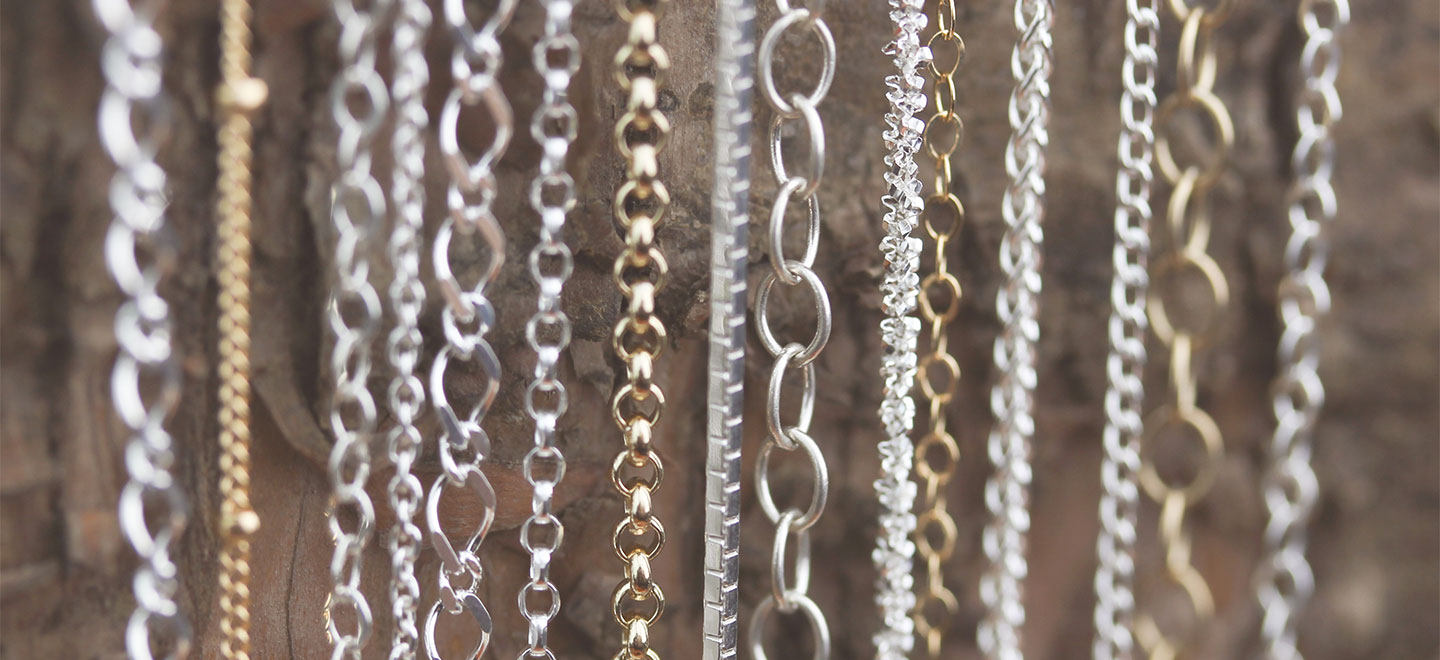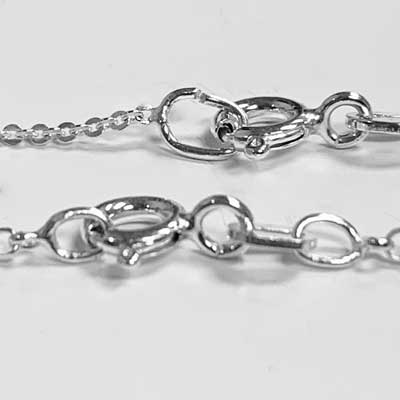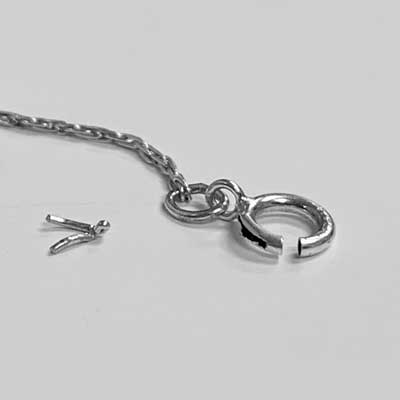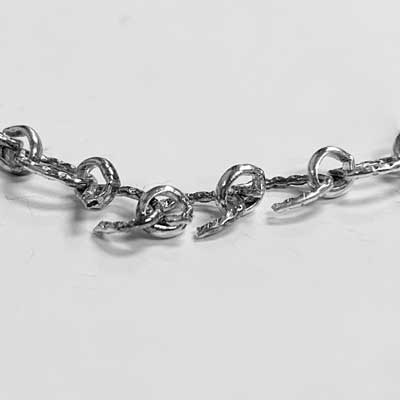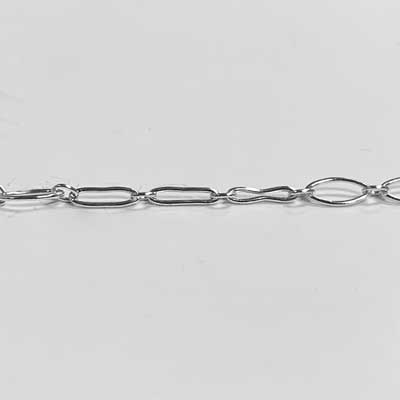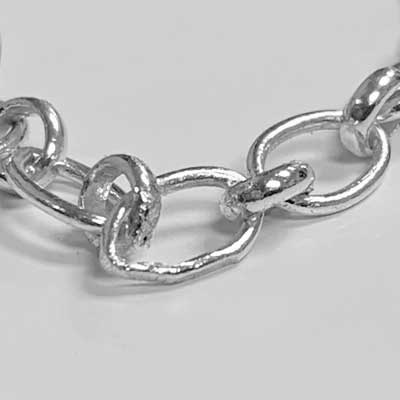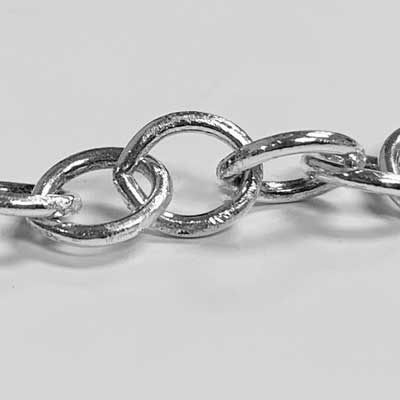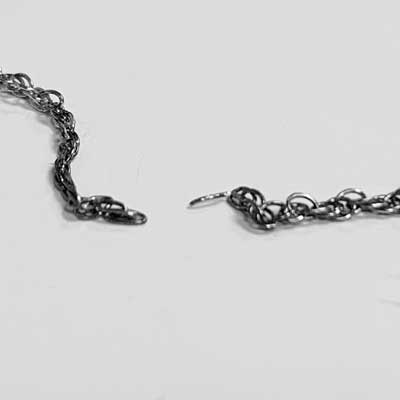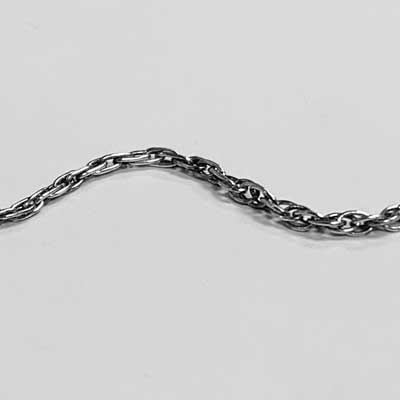Let's look at why jewelry chains break and ways to prevent it. From common causes to less known culprits, I'll share some helpful tips to extend the life of your favorite jewelry chain.
There is nothing more frustrating than when your favorite jewelry breaks. But do you know why jewelry chains break and how to prevent it in the future? The reason is obvious when a jewelry chain is abruptly snagged or a child pulls on it. It is less obvious when a chain suddenly drops off your neck when you are walking down the street. Why would that happen? Let's take a look at how to minimize chain breakage complaints and repairs.
Why Jewelry Chains Break
It may require some detective skills to determine why a chain breaks. Examining the piece carefully with a loupe can reveal clues. Ask your jewelry client questions about what happened recently as well as their jewelry-wearing habits. This section can give you a checklist for troubleshooting problems when they occur as well as establishing best practices in your studio for quality control. Start tracking your repair requests for stretched chains, broken links, broken clasps, and jump rings to inform your choices.
Jump Ring Connections are Vulnerable
Jump rings can be the weakest point on sterling silver pendant chains. These tiny closures are the number one repair item on finished jewelry chains. They're also subject to debate: Soldered vs. unsoldered. Some jewelry artists never solder their jump rings closed, and they have valid points. If a jewelry chain were to get snagged what would happen if the jump ring was soldered closed? The links would stretch or break, the clasp could get broken, or the wearer could even get a serious neck injury. Yet, unsoldered jump rings are vulnerable weak points. Often, a jump ring will slowly open over time and a necklace will fall off quite suddenly before the wearer has noticed the problem. Even a very small gap can allow a thin gauge chain link to slip through.
I like soldering jump rings closed, but honestly, it's a personal choice as a jewelry maker. If you do choose to solder them, it's easy to do and will strengthen the chain against normal wear and tear. If you choose to leave your jump rings unsoldered, make sure that you are closing hard jump rings properly. Select heavy-gauge, tempered jump rings. Soft, open jump rings will pull apart at the gap over time or when stressed. Consider the consumer experience and repair considerations. The final decision may come down to the lifestyle of your jewelry target audience and the details of your particular jewelry collection.
What to look for: distorted jump rings or wide gaps at the closure seam
Clasps Can Fail
The right clasp is crucial for extending the life of jewelry chains. While spring rings are acceptable for lightweight chains, placing them on a large linked jewelry chain is not ideal. Between spring rings and lobster claws, I choose lobster claws 90% of the time. They're stronger than spring rings, built to last much longer, and they're easier to open and close. Another option is to use toggles or hooks & eye clasps on larger diameter jewelry chains. These closures are durable and sturdy. When fabricating a clasp, be sure to work harden the material and size it appropriately for your chain and embellishments.
Pay close attention to connection points like where clasps and pendants are attached- these tend to be the weakest areas of chains because of the pressure put on the connections. Check clasp mechanisms for issues like not closing fully, growing gaps, etc. - this indicates wear and should be fixed ASAP so you don't lose your favorite necklace. ~ Christine Cravens 10gables.com
What to look for: clasp malfunction, distorted clasps, visible damage
Manufacturing Soldering Defects Do Happen
During the manufacturing process, chain links are soldered closed. On rare occasions, something will go wrong in the process. The solder occasionally does not flow and bond as it should. This issue will be noticeable when multiple links begin to pop open across the chain as you work with it. When this occurs, notify your supplier and return the defective chain. You will usually catch this problem well before a chain is finished and sold to a customer.
What to look for: multiple popped links when the chain does not appear to be stretched from undue force
The Chain Cannot Handle the Pendant Weight
So you've found the perfect sterling silver charms or fabricated the most beautiful pendant and you're anxious to show it off to the world. Now to select the best necklace chain for your ornament. First, you need to decide on the material of the chain. Silver is a malleable metal that can stretch or break if the pendant weighs too much. Steel, on the other hand, is quite strong so a smaller link steel chain can handle a large or heavy pendant.
Second, consider chain diameter. How many people go by the price of the chain rather than the weight of the pendant? You'd be surprised. The weight of the pendant should always be the number one consideration when choosing the jewelry chain.
Third, be mindful of the wire gauge used to make the links. It's crucial to purchase or fabricate a jewelry chain suitable and strong enough to hold the weight you're suspending. Don't just go by the diameter of the links, you must be aware of the wire gauge thickness as well. Links made from wire that is 24 gauge or thinner should only be used for lightweight charms, 20-22 gauge can generally be used for medium-weight items, and 18 gauge or thicker are ideal for weighty pendants. This is a rough estimate. Use your best judgment when matching chains and pendants. SHOP SILVER CHAIN >>
What to look for: Drawn or stretched chain links at the back of the chain near the clasp and near the pendant attachment point indicate strain on the chain that probably led to the break
Abrasives and Corrosives Weaken Chains
Lotions, cosmetics, shampoos, and more. The chemicals in household items that are common in our everyday lives can be hazardous to your favorite jewelry. Liquid and gel residues can build up on your pieces and make them hard to clean. Grit or microcrystals in products can act as abrasives on metals leading to wear and tear. Plus some corrosive chemicals can slowly damage the metal in jewelry pieces, too. Eventually, weak points may cause chains to break unexpectedly. Remove your jewelry pieces before showering, using toiletry products, or cleaning around your house to prevent damage.
You wash your clothing after wearing it, why not wash your jewelry too! A few drops of Dawn dishwashing liquid with hot water in a teacup is the perfect overnight soak. Rinse it off in the morning and dry with a soft cloth. This one action will prevent contact dermatitis too! ~ Nanz Aalund Bainbridge Artisan Resource Network
What to look for: Chain links that are visibly worn through and thinner in places show signs of wear from chemicals or abrasives
Dirt Slowly Grinds on Jewelry Chains
Your jewelry pieces should be removed before you head out to the garden or a day at the beach. Although we all love spending time outdoors, certain activities and jewelry do not go hand-in-hand. Dirt and sand can be very abrasive and can scratch up the metal in your beautiful jewelry pieces. Over time, the damage can become more serious. Just having dirt or sand on your hands and reaching up to adjust your jewelry chain can deposit particles that settle into tiny spaces or connection points where they will wear down the metal. So, refrain from wearing any jewelry when you're likely to get gritty.
What to look for: A chain that is dirty and scratched is probably in the muck regularly. Also, look for links that are worn thin from grit friction.
Tangles and Tugging Stress Chains
Take your jewelry off before going to bed. How many times have you accidentally (or intentionally) worn your favorite necklace to bed only to awaken to find your hair tangled up in the links? Or the bedsheet has gotten caught in it and ripped it off. Or what about the jab you feel when you lay awkwardly on that favorite pendant. Your jewelry pieces are precious and so is a good night's sleep. Just don't do it. It's not worth potentially breaking your jewelry or cutting chain links out of your hair the next day.
Similarly, take care to prevent tangles when storing jewelry chains. Yanking and pulling on tangles to fix a snag can also stress chain links. Lightweight, fragile chains are not made to handle much strain.
What to look for: A chain that survived a wrestling match usually shows a clear stress point at or near the break. Look for kinks and drawn links.
Preventing Jewelry Chains from Breaking...
Select the Right Chain and Clasps for the Job
Avoid strain on your chain by selecting the right chain for your embellishments. This is a crucial point, chains or clasps that are too weak will need to be repaired in the future. Avoid long-term damage described in the scenarios above and if you are in doubt just ask. There are Facebook groups with members who love to share advice and knowledge.
Quality Control During Chain Finishing Can Prevent Repairs later
Check your soldering and connection points carefully. Don't rush it. Set 3-5 minutes aside after finishing each piece to carefully check it over. Spending the time to do this final check can potentially save you a lot of time in the future. If you are new to soldering jump rings, scroll down to watch our instructional video.
Bracelet Chains Should be Heavy
Bracelets face more wear and tear than necklaces, therefore do not choose dainty chains for these jewelry designs. Choose heavy gauge links that can withstand daily bumps and snags. As a general rule of thumb, bracelet chains should be 4mm in diameter and 20 gauge or larger. SHOP CHARM BRACELETS >>
The Last On and First Off Rule
These five little words can extend the life of all of your jewelry pieces a bit longer under normal circumstances. Memorize them, implement them, and share them with other jewelry enthusiasts... "last on & first off." Jewelry should be the last thing you put on when you leave your house in the mornings and the first thing you take off when you get home each night.
Jewelry Requires Regular Maintenance
Just like a car, your jewelry requires some upkeep. Buy quality cleaning cloths and supplies to polish your jewelry at least once a year. Or, a trip to your favorite jeweler each year is a great idea! Offer events to your clients where you will professionally clean their jewelry while they look at your new collection (hint, hint). During the cleaning, take a few minutes to inspect the jewelry for any potential problems that could arise in the future. Loose stones, sticking clasps, and worn down jewelry chain links will be an easy repair to make before they completely break.
Educate Customers on How to Handle with Care
Chains are not elastic. It's important to explain this to customers. Excessively pulling or stretching on chains will either cause them to break or the links will become elongated and deformed. Try educating your customers with an information card with tips and maintenance suggestions.
- Don't pull a chain over your head to put it on or take it off.
- Remove necklaces when holding or playing with a child.
- Do not wear jewelry chains when participating in sports or other activities where the chain can get snagged.
- Don't wear jewelry to bed.
Learn more about chain link styles in our popular blog: Types of Jewelry Chain Link Styles.
Soldering a Jump Ring Closed?
Watch the video to learn how
Keep Exploring!
Untangling Jewelry Chain: Tips, Tricks & More
How to Keep Sterling Silver From Tarnishing - Protecting Jewelry




